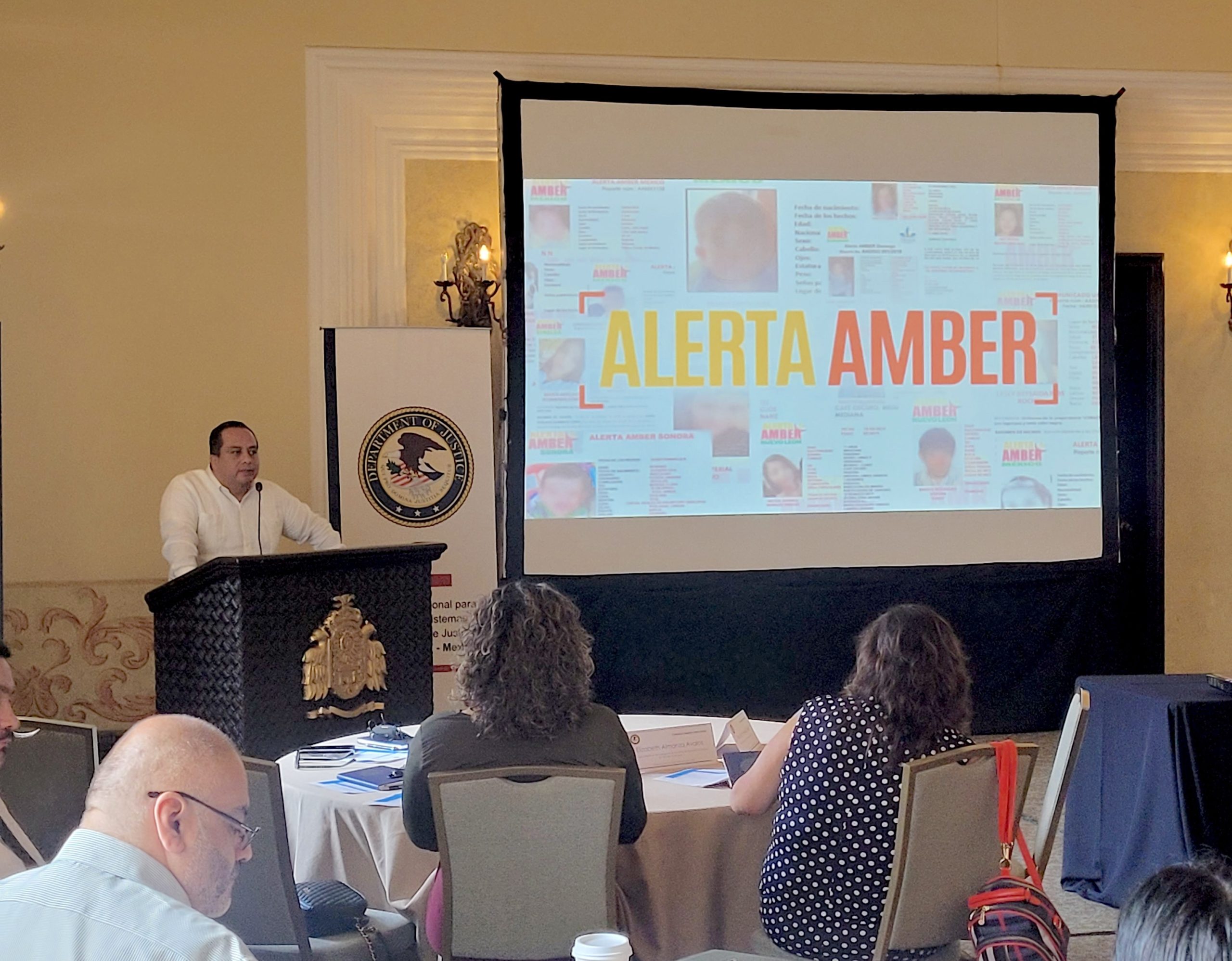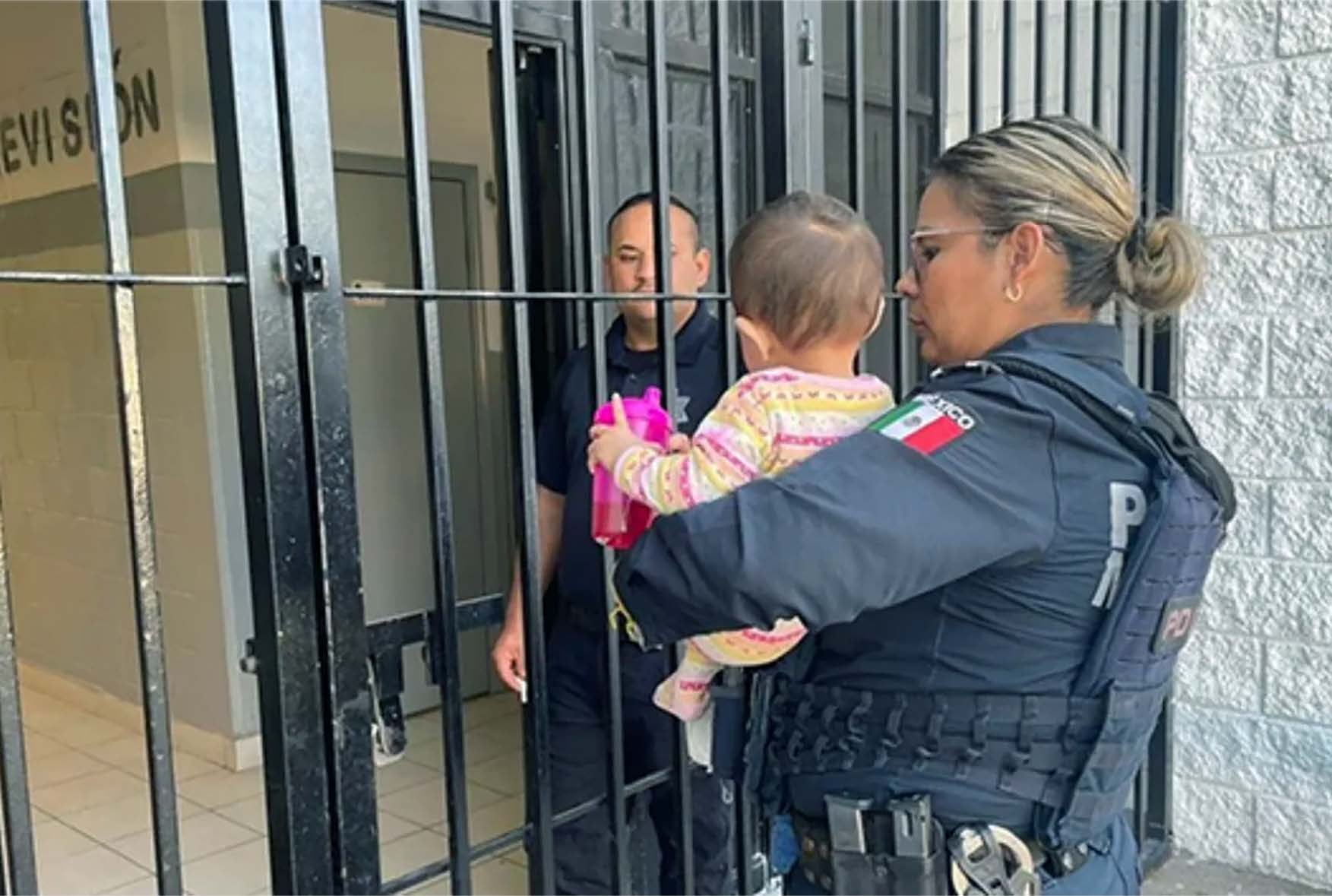
By Rebecca Sherman
On the morning of August 29, 2023, as AMBER Alert Coordinators from northern Mexico gathered in a Monterrey hotel ballroom for a three-day child protection training conference with top U.S. officials, a real-life child abduction
emergency was unfolding behind the scenes.
Hours earlier, and some 230 miles away, 15-month-old Angela Chávez had been taken from her home in Ciudad Juárez, Chihuahua, by armed criminals during a home invasion that left her parents and another adult dead.
Angela was discovered missing by her distraught grandmother, who arrived at the home with local authorities after the murders. Realizing the infant was in grave danger, officials immediately notified Yubia Yumiko Ayala Narváez, Regional Coordinator of the Gender-Based Violence Unit of the Regional de la Fiscalia del Estado de Chihuahua, or Chihuahua North Prosecutor’s Office. But like many of her colleagues in Mexico, Narváez was at the conference, organized by the U.S. Department of Justice’s Office of Overseas Prosecutorial Development, Assistance and Training (OPDAT) team (based in Mexico City’s U.S. Embassy) and attended by leaders of the AMBER Alert Training & Technical Assistance Program (AATTAP).
 Even while at the event, Narváez discreetly sprang into action, issuing a regional Alerta Amber, Mexico’s version of a U.S. AMBER Alert. Posters of Angela—a cherubic girl with large brown eyes—were circulated on social media, and alerts buzzed on cellphones throughout the region.
Even while at the event, Narváez discreetly sprang into action, issuing a regional Alerta Amber, Mexico’s version of a U.S. AMBER Alert. Posters of Angela—a cherubic girl with large brown eyes—were circulated on social media, and alerts buzzed on cellphones throughout the region.
Narváez also briefed fellow conference attendee Carlos Morales Rojas on the situation. As Alerta Amber National Coordination Liaison, Rojas works with Mexico’s 32 state AMBER Alert Coordinators while based in the Special Prosecutor’s Office for Crimes of Violence Against Women and Human Trafficking for the Fiscalía General de la República (FGR), or Office of the Attorney General.

Amid intense and hushed conversations, Narváez and Rojas exchanged information on the abduction during the conference presentations taking place. “Given the seriousness and urgency of the case, we knew we had to work quickly to activate the (national) AMBER Alert, but we also maintained a certain confidentiality of the information,” Rojas recalls.
The effort to rescue baby Angela quickly became a real-time case study that had officials drawing from a deep well of collective experience and training. “That allowed us to disseminate the alert with urgency, encouraging the media to reach as many people as possible,” Rojas says.
Several hours after the first alert was issued—and still with no sign of baby Angela—Rojas elevated the alert to the national level, an expanded presence that would no doubt heighten public awareness of the child’s case. Then, once the national AMBER Alert was activated, Rojas and Narváez informed conference attendees about the developing situation.
Fortuitously, the room was filled with experts on missing and endangered children who collaborated to ensure a swift response in the emerging case. They included: AATTAP Administrator Janell Rasmussen; Yesenia “Jesi” Leon Baron, AATTAP’s Project Coordinator of International and Territorial Programs (including the Southern Border Initiative) and Certification Manager for Child Abduction Response Team (CART) training initiatives; and top officials with the U.S. State Department and U.S. Embassy in Mexico City, including Gigi Scoles, Gabriela Betance, Flor Reyes, and Oswaldo Casillas.
 “All of them facilitated our work, allowing us to carry it out right there at the conference,” Rojas says.
“All of them facilitated our work, allowing us to carry it out right there at the conference,” Rojas says.
Media and public response came swiftly. Kidnappers, likely aware the case was receiving national attention, abandoned Angela in a doorway in Ciudad Juarez. A woman spotted the infant and promptly called 911, helping authorities to safely recover her 30 hours after the first AMBER Alert was issued.
“Those who took baby Angela definitely felt pressure due to the wide dissemination of the AMBER Alert,” Rojas says. “They knew that many people were looking for her.”

With Angela’s rescue occurring on August 31—the last day of the OPDAT conference—Narváez and Rojas were offered the opportunity to present what had just unfolded as a successful case study, “one that was the result of excellent coordination between Mexican authorities and the public,” Rojas says.
“With the conference focused on sharing AMBER Alert success stories, the case of baby Angela was significant. Training is the most important aspect of our work; that’s why we constantly share our experiences.”
AMBER Alerts, along with media reports and the public’s help in searching for a missing child, are powerful tools in the effort to recover endangered missing children, as conference attendees witnessed in real time. “Without the support of our citizens, our work would essentially be futile,” Rojas says. “We would simply be spectators of what happens.”

